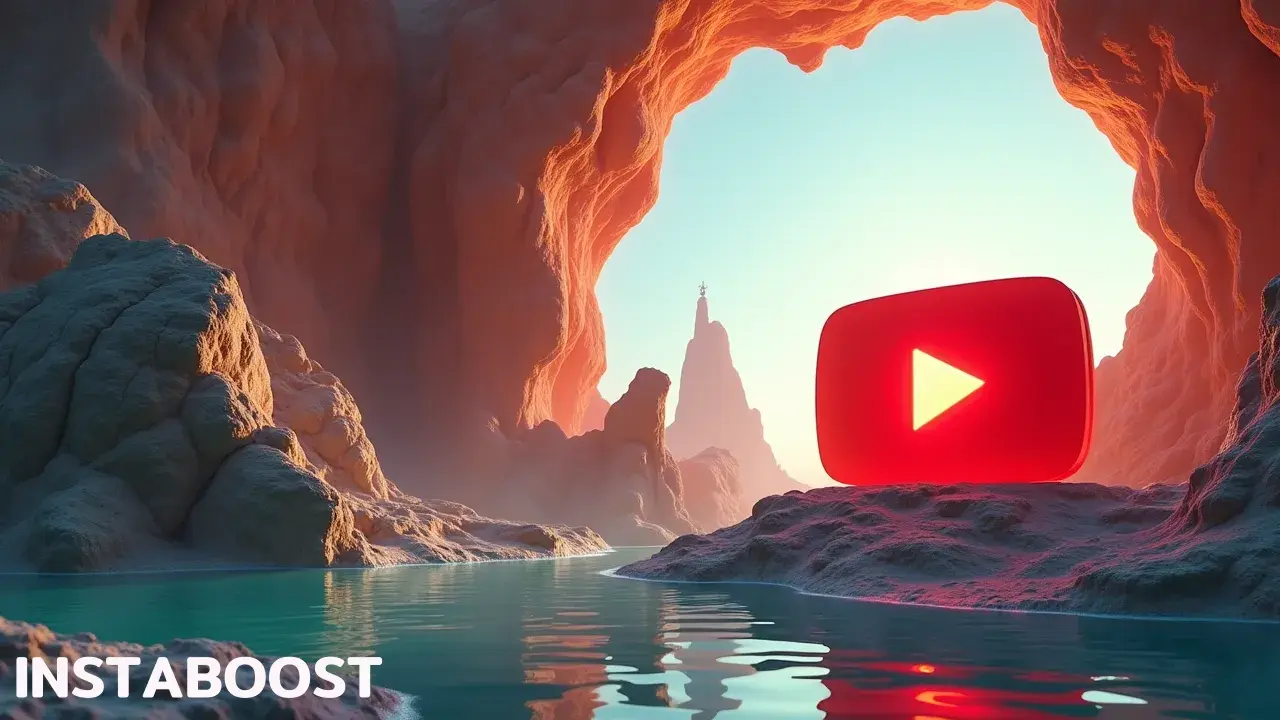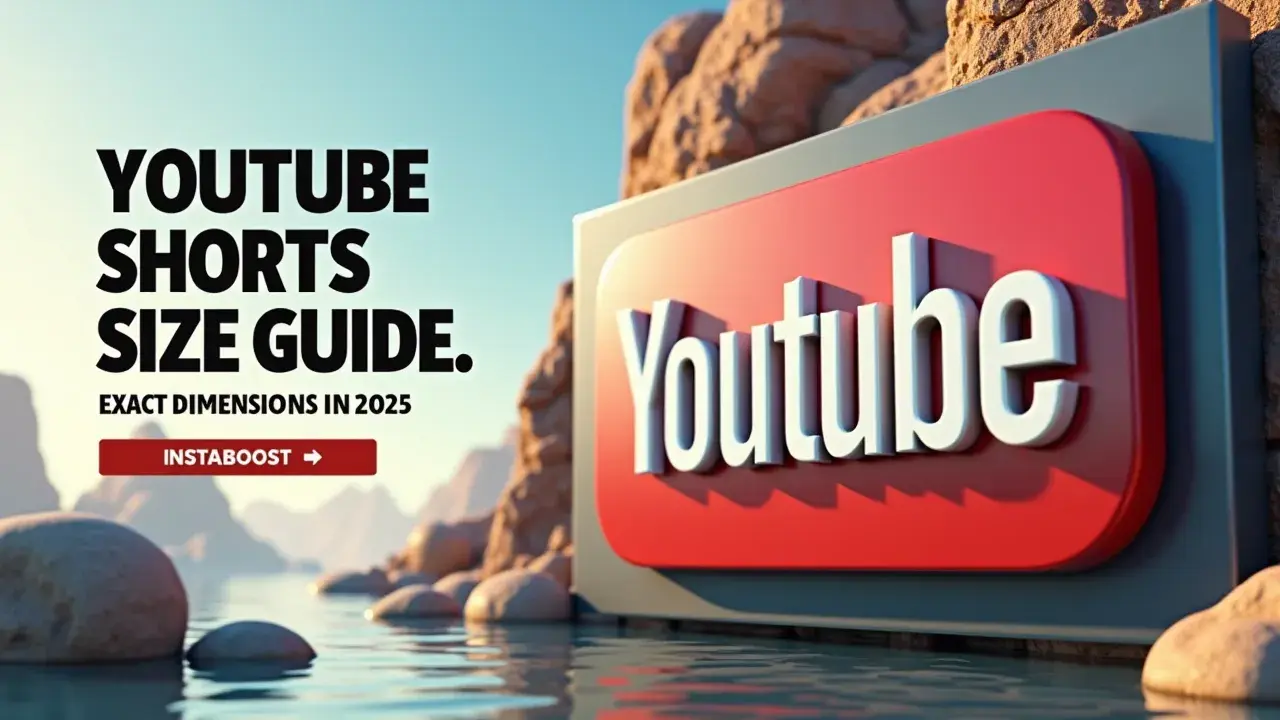What Are the Exact YouTube Shorts Dimensions in 2025?
YouTube Shorts uses a vertical format with specific dimensions that guide optimal creation. Exact sizing centers on a 9:16 aspect ratio, ensuring content fills the frame without cropping or pillarboxing. Keeping to these specs helps maintain clarity and composition, while tips on aspect ratios support consistent framing across devices. When creators align footage and graphics to the recommended proportions, results look polished and engagement tends to improve.
Why YouTube Shorts Dimensions Matter More Than You Think
When you’re trying to get your YouTube Shorts noticed in 2025, the exact video dimensions start to matter a lot more than you might expect. It’s not only about holding your phone upright and filming vertically. The small details – like using 1080 by 1920 pixels, sticking to the 9:16 aspect ratio, and choosing the right file format – play a real role in how your videos look and how people find them.
YouTube changes how Shorts display on different devices, so if you pay attention to the current specs, your videos usually come out looking sharper and sit better in the feed. This all affects how the algorithm treats your videos, too; if your Shorts meet the recommended standards, they’re more likely to show up for new viewers and get watched for longer.
YouTube changes how Shorts display on different devices, so if you pay attention to the current specs, your videos usually come out looking sharper and sit better in the feed. This all affects how the algorithm treats your videos, too; if your Shorts meet the recommended standards, they’re more likely to show up for new viewers and get watched for longer.
Whether you’re reposting something from TikTok, exporting from your editing app, or recording right in YouTube, getting these dimensions right helps avoid your video being blurry, cropped in a weird way, or stuck with black bars. Looking back, it’s little details like this that make a difference when you’re trying to build your YouTube brand.
Once you see why the technical side matters, you start to notice which videos catch attention and which ones quietly slide by, and it feels a little easier to make decisions that help your own stuff stand out.
Once you see why the technical side matters, you start to notice which videos catch attention and which ones quietly slide by, and it feels a little easier to make decisions that help your own stuff stand out.

Proof in Performance: Why Exact Shorts Dimensions Build Trust
When you look at the numbers, it’s pretty hard to ignore the difference that following YouTube Shorts’ size guidelines can make. Sticking to 1080 by 1920 pixels – the standard 9:16 – does more than keep things tidy; it actually helps your videos get seen. Shorts that fit those dimensions tend to show up more often in search, and they always look sharp, whether someone’s on their phone or using a desktop.
The algorithm seems to notice this, too. YouTube wants to serve videos that fit their space, so Shorts with the right size often get featured more on the “Shorts Shelf.” If you’ve ever wondered why some Shorts seem to take off while others barely get a handful of views, it often comes down to small choices like this.
The algorithm seems to notice this, too. YouTube wants to serve videos that fit their space, so Shorts with the right size often get featured more on the “Shorts Shelf.” If you’ve ever wondered why some Shorts seem to take off while others barely get a handful of views, it often comes down to small choices like this.
YouTube’s own analytics point out that videos with the recommended sizing usually see better click-through rates and people watch them longer – which matters a lot when everyone’s competing for attention in 2025. Seasoned creators mention it, too. There’s something about a video that’s formatted properly; it feels reliable, professional, easy to trust, even if you don’t notice it right away. Some people, thinking about ways to kickstart growth, briefly consider things like buy YouTube subscribers, but those technical details – like sizing – just quietly do their work over time. So these aren’t really nitpicky details, even though they might seem that way. Getting them right is part of what helps a channel grow bit by bit, sometimes in ways you only notice much later.
Strategy Over Guesswork: How to Prep Your Shorts for 2025
There really isn’t a way around context. Getting YouTube Shorts dimensions right means more than just remembering the numbers; it’s about why those numbers matter in the first place. YouTube is set up for a 9:16 aspect ratio (that’s 1080 by 1920 pixels), and when your video matches that, things tend to go a lot smoother – for both the platform and the people watching. If your video ends up too wide or gets awkwardly cropped, people notice, and honestly, so does the algorithm. Most viewers won’t bother with a video that looks off in their feed; they scroll right by. The creators who stick to the recommended size aren’t only following the rules – they’re making sure their uploads are easier to find and watch, and that’s what really gives them an edge.
Each time you get the specs right, you remove a little friction between your video and someone who might want to watch it. In a way, that’s what planning ahead looks like – setting yourself up so your videos have the best chance to be seen. Whether you’re filming straight from the app or editing somewhere else, it’s worth double-checking your export settings before you hit upload. By now, guessing the dimensions really isn’t a good idea anymore. If you lean on the standards YouTube sets, your Shorts will look the way people expect, work well with how the site runs, and fit in with all the other videos people are used to seeing – and, in the process, enhance your video credibility.
Don’t Fall for “Good Enough”: Why Shortcuts Backfire
It’s not really about being negative – it’s more about paying attention to what tends to happen. A lot of people see YouTube Shorts’ size guidelines as something you can bend, thinking as long as a video seems vertical, it’ll work. But going with “close enough” can actually hold your videos back.
The algorithm checks for the exact 9:16 aspect ratio, which means 1080 by 1920 pixels. If your Short isn’t right on those measurements, even a little off, YouTube might treat it differently. Sometimes those videos end up with awkward cropping or black bars, or they get boxed in, and viewers usually notice. You see a lot of Shorts that end up with blurry edges or add those black bars on the sides, and while it might seem like it doesn’t matter, it does – for both the audience and YouTube itself. Getting the size exactly right isn’t about being overly precise for no reason – it actually helps your videos get seen. Heading into 2025, more people are catching on to this, so the standards are only getting higher.
There’s a real difference in how your content performs when you follow the specs, especially if you’re aiming to grow your audience via views. It’s not about perfectionism, it’s about making small choices that actually affect what happens to your videos. Following the size guide isn’t for the sake of rules – it’s just the way things work if you want a fair shot.
From Pixel Math to Practice: Your Next Steps
You’ve probably read enough guides and advice at this point – it’s probably time to try making something yourself. Take the YouTube Shorts dimensions, 1080 by 1920 pixels with a 9:16 aspect ratio, and make a quick test video, even if it feels a bit rough. Don’t get stuck waiting until you feel ready or chasing some idea of perfection. These specs aren’t meant to box you in; they’re there to help you get started. Shoot a short clip, trim it down so it fits the frame, and upload it. Watch it on your phone and in the YouTube app to see how it comes across.
Pay attention to simple stuff, like whether your main subject is centered, or if any text is getting cut off – sometimes what looks fine in the editor doesn’t translate on a small screen. It’s also worth checking if any titles or captions are easy to read without squinting. There’s a bit of a gap between what almost fits and what actually looks clean on mobile, especially with YouTube making changes for how Shorts show up in the feed as 2025 gets closer. Some creators end up picking up little tricks along the way – like adjusting formats or using tools that help make your videos go further – just to see what gives them an edge.
You can always keep an eye on your analytics to see what’s working, and tweak things when you upload the next one. It’s not busywork – each upload is a low-stakes way to get a little better at something that most people ignore. If you start now, you’ll be in a much better spot to figure out what works as things shift, and you’ll get used to making small improvements as you go along.
Precision Isn’t Optional: Why Dimensions Dictate Results
Getting the size right for YouTube Shorts isn’t only about technical guidelines – it actually shapes how people see your videos. YouTube’s recommendation – 1080 by 1920 pixels, with a 9:16 aspect ratio – isn’t arbitrary; it’s meant to make sure what you upload looks sharp on a phone, which is where most people are watching. Using other dimensions can lead to footage that comes out blurry or awkwardly cropped, or you’ll see black bars creeping in at the edges. Even if you don’t notice these things at first, they can make the video feel off, and in a feed where viewers are always scrolling, little details like that can be the difference between getting a view or being skipped.
The platform tends to favor videos that play smoothly and look tidy, so following these specs isn’t about nitpicking – it’s about avoiding small issues that could get in the way. I’ve seen in creator forums and YouTube’s own help docs that, for 2025, sticking to these sizes also helps when you use editing tools or overlays. It’s easier to add text, music, or stickers without running into problems, and, come to think of it, this is just as relevant as those quick tips you see for boost all YouTube metrics instantly. If you’re trying to get noticed on Shorts, getting the vertical size right is really the starting point, not an extra thing. It’s one of those details that’s easy to overlook, but once you’ve got it sorted, you don’t have to worry about technical errors pulling attention away from what you made. It isn’t about following rules for the sake of it – mostly, it’s just about giving your videos a fair shot at connecting with people.















